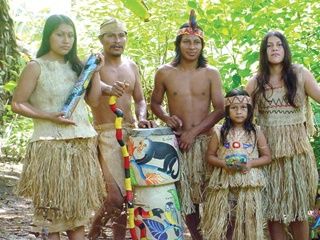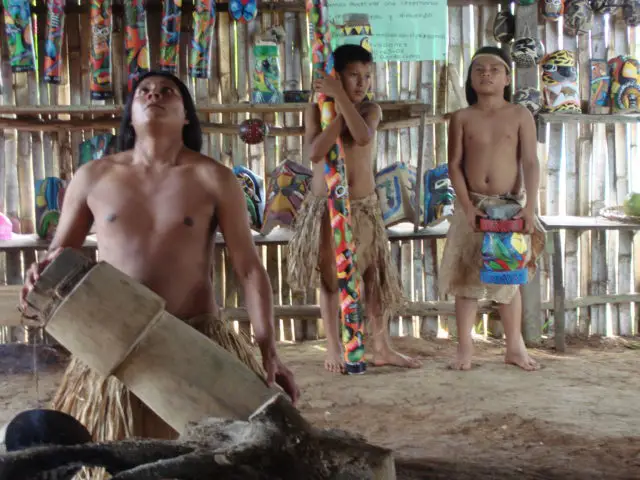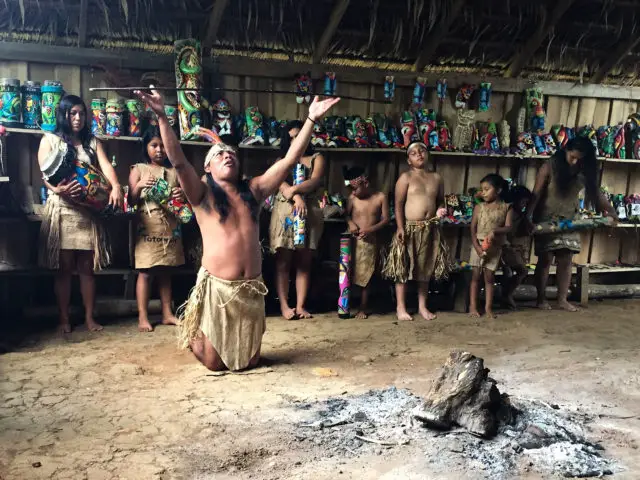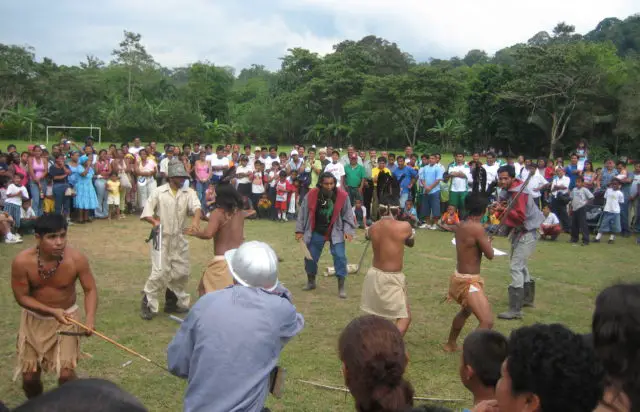
If you want a unique cultural exchange with the first inhabitants of Costa Rica, do not forget to go to the Maleku Indigenous Community, since this is another of the great attractions to enjoy in our country.
When you visit them you will marvel at their way of life, which is far from the modern technological world and bustle of the urban lifestyle. In the Maleku reserve, you can chat with its inhabitants, taste their meals, learn more about their customs and acquire their crafts.
The Maleku reserve is approximately one hour away in the town of Guatuso, specifically in the Tonjibe indigenous reserve. The indigenous Maleku people are a proud tribe with extremely deep roots, which they pass on to their children. The territory of the Maleku tribe has 2993 hectares which are divided into three small communities.
How to reach the Maleku indigenous community

The Maleku indigenous reserve is located just 10 kilometers north of Venado and 50 kilometers by road north of La Fortuna San Carlos. It is within the municipality of the small town of San Rafael Guatuso. In this reserve live the remaining 460 members of the Maleku (Guatuso) tribe, an Amerindian ethnic tribe of Costa Rica, also called Palenque Margarita and Tonjibe communities.
They still retain their native language, the “Maleku” that is used on the radio and taught in schools, spoken by 70% of the Maleku population, in a bilingual way with Spanish.
When you arrive in San Rafael do not expect to see its inhabitants dressed in tribal clothing because being a small urban area the locals do not use native clothing, nor expect to physically distinguish them from other Costa Ricans, as they do not have distinctive different features concerning their compatriots. If possible, however, to find shops in the town where Maleku artisan objects can be purchased, especially drums made of snakeskin and engraved wood.
Knowing a little more about the Maleku reserve

Once you get to the Amerindian reserve that is within a bucolic and rural setting you can observe and feel the traditional indigenous culture in its purest form. Tourists are welcomed with open arms and guided tours are offered in which expert native guides with whom you will learn about medicinal plants, religious beliefs of the tribe and funeral rites.
It is also possible to go hiking along the tropical forest, try the local cuisine and attend a Maleku dance performance. They even have a small and modest craft museum. Also, you can admire the archaeological excavations on your trip through the Maleku indigenous reserve.
Getting the most out of your visit to the Maleku indigenous reserve
For this excursion, a local will be waiting to welcome you when you arrive at the entrance of the villa, the first thing we recommend is contacting a guide that offers you a tour of the place. Usually, those excursions start early in the day.
The journey is very interesting and rich from the cultural context. You will learn details about the lifestyle of this ethnic group, their rites and the way they bury their dead. Cocoa will be shown as one of the central axes of agricultural activity, but also these indigenous people have beautiful handicrafts for sale, being today their main form of subsistence.

The excursion continues through a nearby forest and there you will receive information about local plants, some used for medicinal treatments. You can also run into the fauna of the place such as sloths, monkeys, bird species, insects, poisonous frogs, the tour lasts about two hours.
Upon returning to the villa from the forest walk, and after lunchtime in which the Maleku chefs are truly experts in preparing typical dishes. The final touch to this lovely visit is an indigenous dance for the guests, “the fire ceremony”, the interaction during the dance is in their native language along with their colorful costumes. At the end of the dance, it is a good time to buy some local crafts for taking home as a souvenir.
On the way back from this extraordinary visit, the tourist feels that every minute of the excursion (approximately six hours) has been worth it. The experience of connecting with the roots of Native Americans will be one of a kind.

